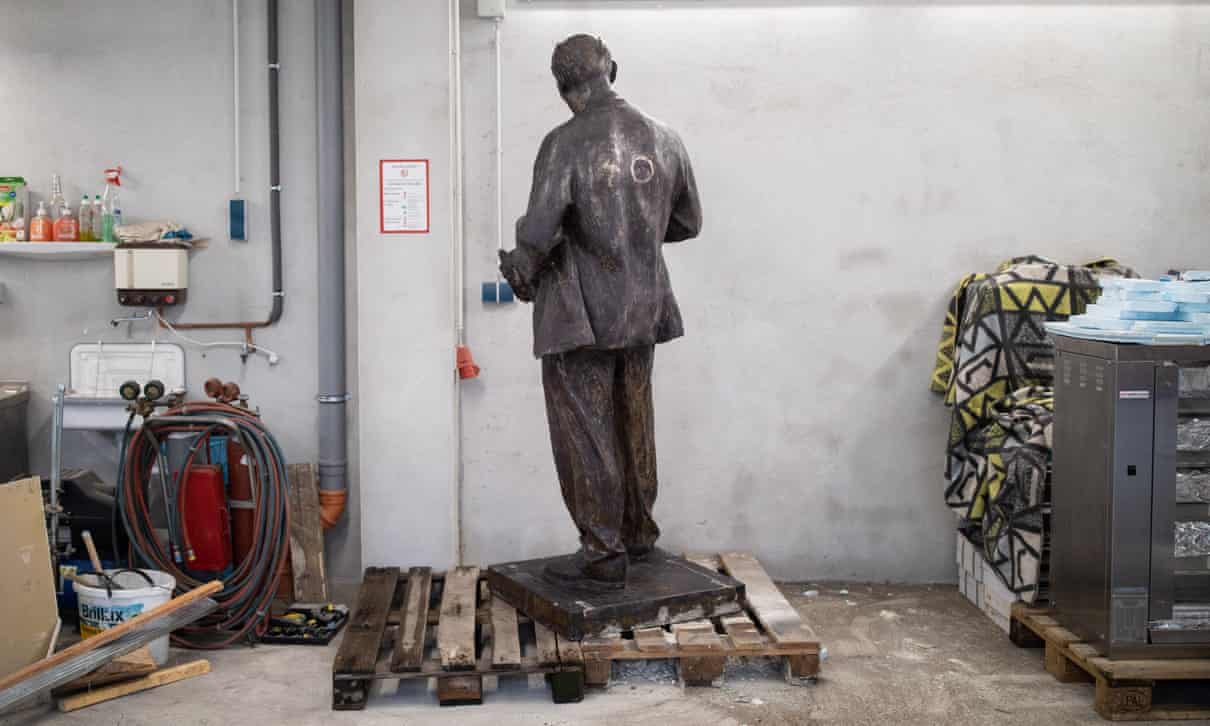Lenin statue to be unveiled in west Germany despite legal fight
While a global row rages over the controversial
pasts of historical figures immortalised as statues, on Saturday a
divisive new monument to the former Soviet leader Vladimir Lenin will be
unveiled in Germany.
More than 30 years after
the communist experiment on German soil that followed the second world
war ended, the tiny Marxist-Leninist party of Germany (MLPD) will
install Lenin’s likeness in the western city of Gelsenkirchen.
The
MLPD says it is the first such statue ever to be erected on the
territory of the former West Germany, decades after the eastern German
Democratic Republic communist state collapsed.
“The
time for monuments to racists, antisemites, fascists, anti-communists
and other relics of the past has clearly passed,” said MLPD’s chair,
Gabi Fechtner, in a statement.
“Lenin was an ahead-of-his-time thinker of world-historical importance, an early fighter for freedom and democracy,” she said.
Not everyone in Gelsenkirchen, a centre of the
former industrial and mining powerhouse Ruhr region, has welcomed the
2.15 metre (7ft) likeness of the communist leader, which was made in the
former Czechoslovakia in 1957.
“Lenin stands
for violence, repression, terrorism and horrific human suffering,”
representatives from mainstream parties on the Gelsenkirchen-West
district council said in a resolution passed in early March.
The
council “will not tolerate such an anti-democratic symbol in its
district”, it added, urging that all legal means should be used to block
its installation.
But later in March the upper
state court in Münster rejected an argument that the statue would
impact a historic building on the same site.
The
MLPD has trumpeted interest in the statue from as far away as Russia,
and is celebrating the unveiling with sausages and cake – while urging
guests to maintain social distancing and wear nose and mouth coverings
against coronavirus infection.
The worldwide
Black Lives Matter movement has found some echo in Germany. Unknown
people splattered red paint on a statue of Otto von Bismarck in
Hamburg’s Altona district this week.
The “Iron Chancellor” behind Germany’s unification
in 1871 is also known for hosting the Berlin Conference of 1884, which
became a byword for the carving up of Africa between European colonial
powers.
Berlin itself has been a hub of
activism against public commemorations of colonialists, with much ire
directed at street names honouring 19th-century figures in the so-called
“African Quarter”.
But political decisions to
rename roads named after figures like Adolf Lüderitz, a merchant who
played a key role in colonising Namibia, or Carl Peters, a colonialist
behind German expansion in eastern Africa, have met with resistance from
locals.
Urte Evert, head of Berlin’s Spandau
Citadel museum, where many old statues are on display, said that in
decades of experience addressing the country’s Nazi and communist pasts,
“things have always been done properly” with official applications to
local authorities and orderly dismantling of monuments.
“We
haven’t made so much progress with colonialism, something the USA,
Britain and France too have been confronting for much longer,” Evert
added.
While the US, Britain and Belgium have
seen statues of Christopher Columbus, slave trader Edward Colston and
King Leopold II, brutal ruler of the Congo, attacked or removed, in
Germany, only a handful of monuments have been splattered by paint.
For Evert, how these objects are presented to the public could be a way for the country to reckon with its past.
Statues
that are “overturned or provided with a plaque [to explain its past]
can make it possible for a debate to take place in a public space,” she
said.





Post a Comment